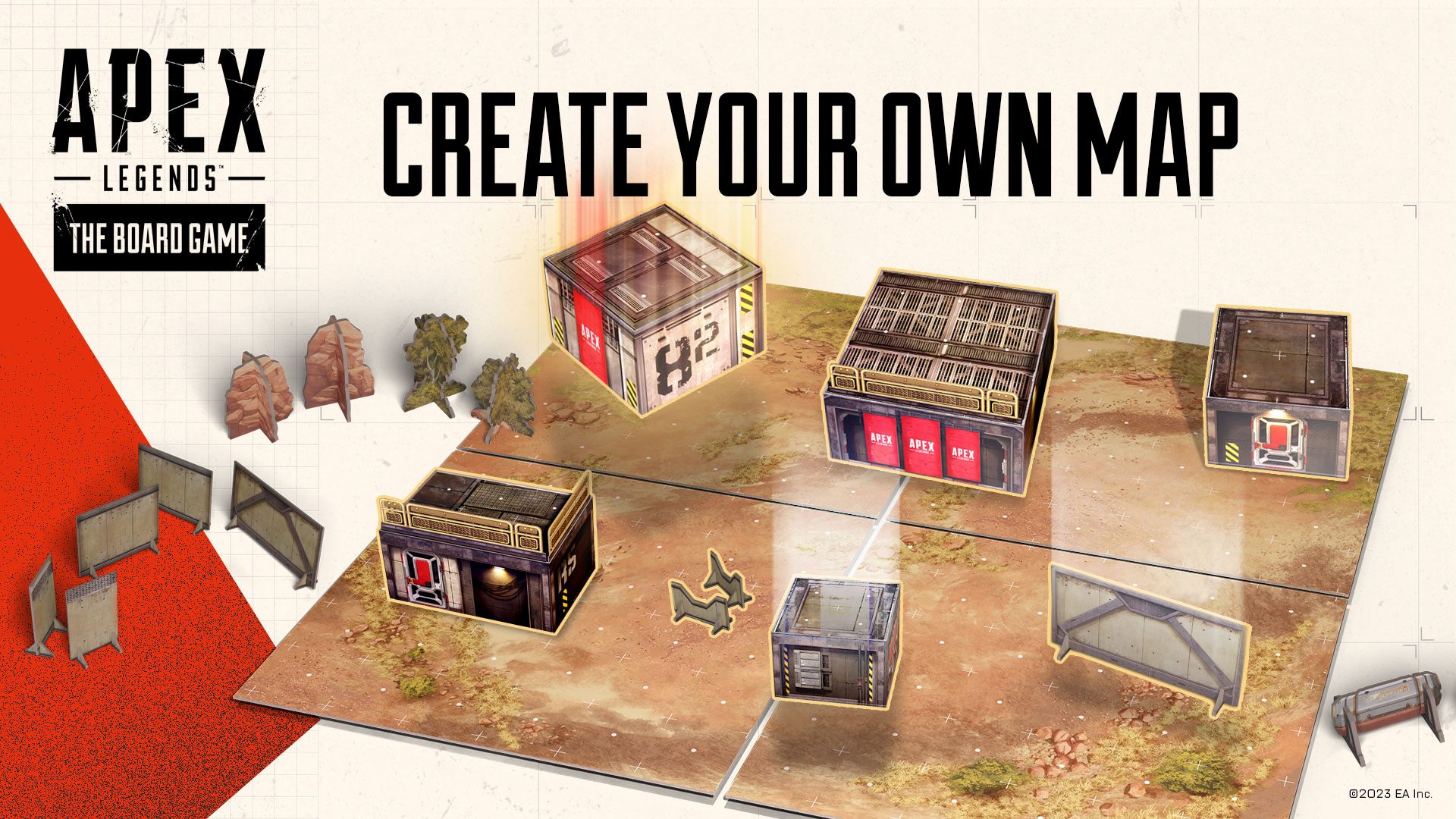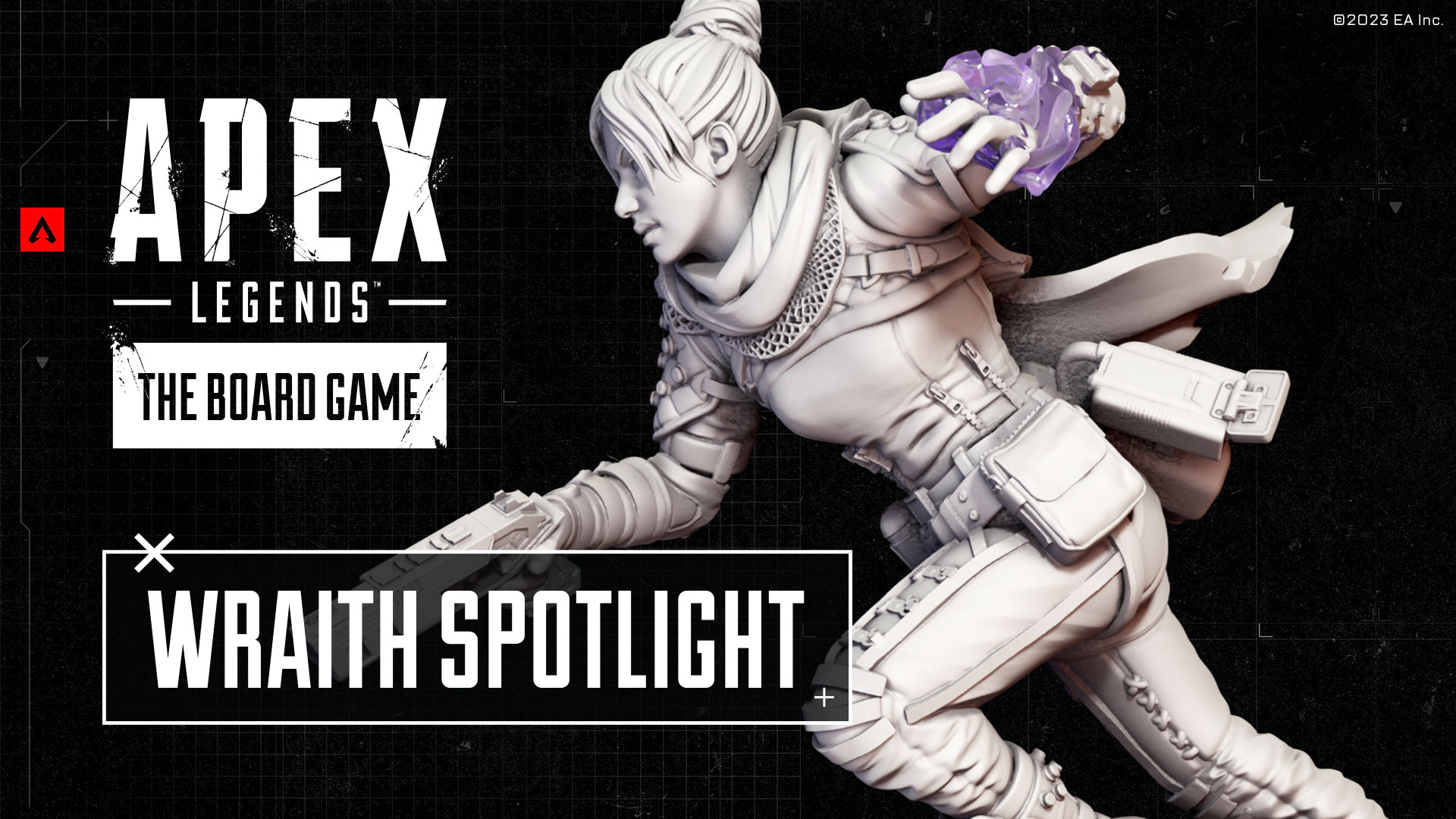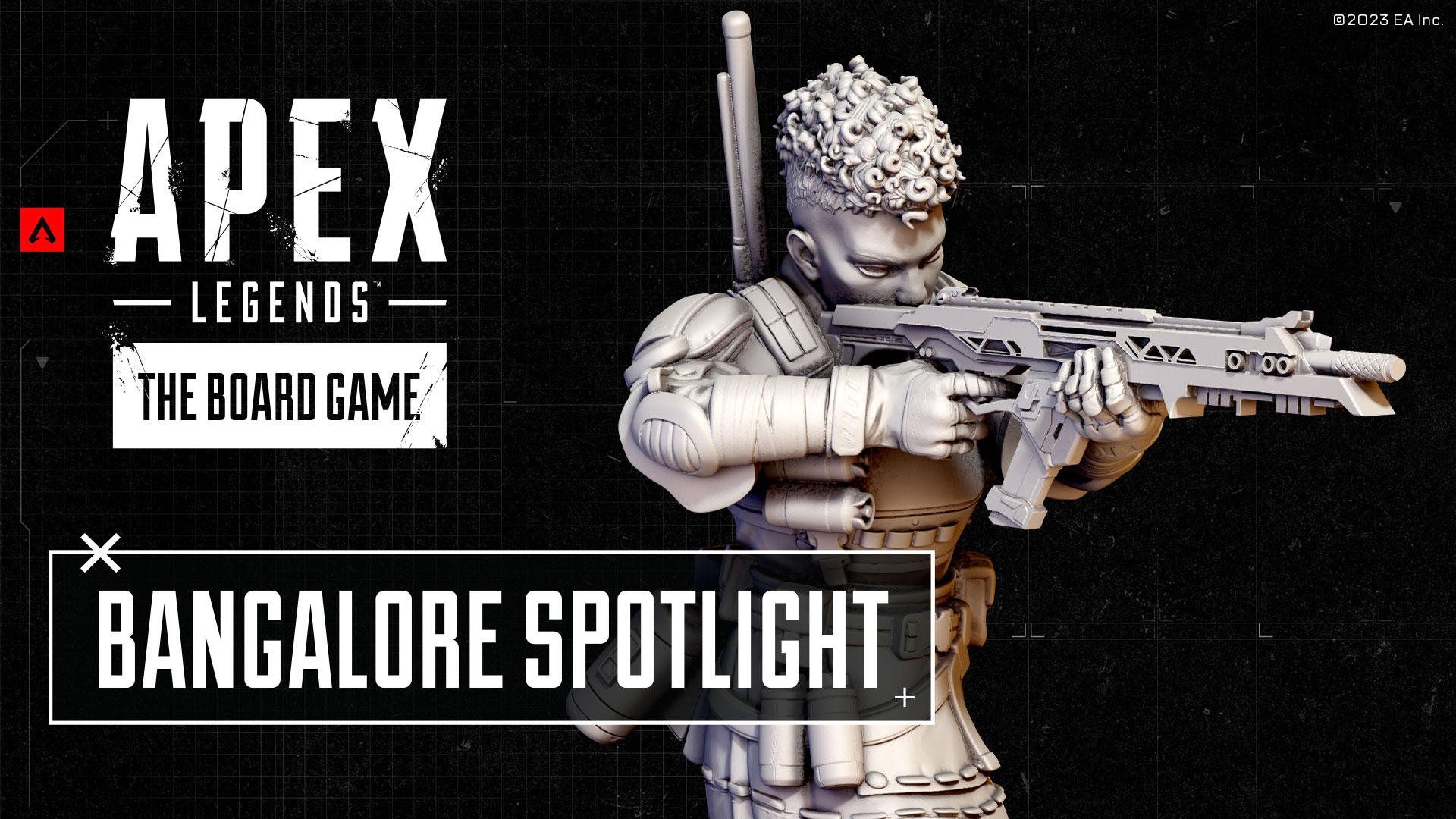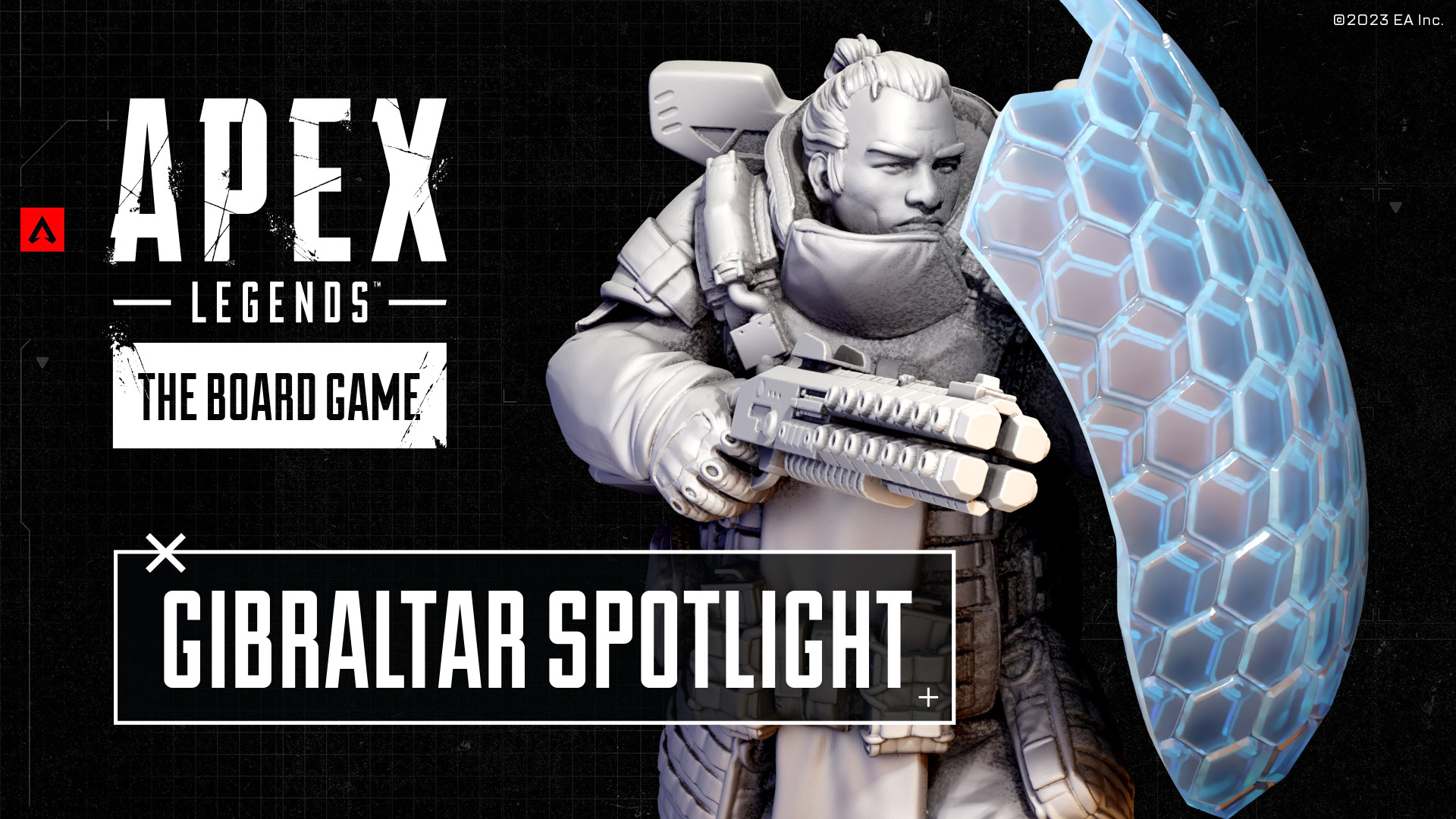The Map & The World
While Jakub, our CEO, might look like he’s got the situation under control, that’s about to change as he gets third partied by none other than Paula Deming from YouTube’s Things Get Dicey! Be sure to tune in for insight into some of the game’s key aspects.
When you think of Apex Legends™, what’s the first thing that pops into your mind? The adrenaline rush of a fast-paced tactical shooter? That satisfying feeling when you and your teammates outsmart your opponent through cunning positioning? Well, today we’re focusing on the latter!
The place where it all started
Kings Canyon—a vast area with danger lurking around each corner and such memorable locations as the Airbase, the Artillery, the Bunker, and many more! Each location is filled with loot, full of threats and strategically varied terrain features and structures.
How do you convey all of that within the physically limited space of a board game? By creating a relatable modular world that’s believable and easy to comprehend.
We decided on utilizing 3D modular components in order to bring out the full potential of the world of Apex Legends™. Not only do they look stunning, but also perform a very important role with regard to gameplay, which we’ll discuss a bit later. This decision led us into dividing the playable area into a square grid to fit the physical components.
Positioning & outplaying the opponent
With the square grid and 3D assets established, the next step was to make every space count, recreating the epic “outsmart your opponents” moments. But how do you actually do that?
There are a few aspects to consider:
- Line of Sight
- Applicable Ranges
- Movement accessibility
- High & low ground advantages
- Additional “tools” at each Legend’s disposal
Apex Legends™ has an extremely dynamic, some could even say ‘fierce’— combat system. In order to keep these dynamics in the board game we wanted for each player to be able to immediately establish whether or not they are visible to another character. Without going into too much detail, all you should remember is the 45° rule, according to which if anything is located beyond that angle or behind cover it is outside the LoS. This, combined with the square grid, makes it easy to see the LoS without the use of additional tools, even considering the three possible height levels which change the applicable ranges and provide certain advantages.
Positioning & outplaying the opponent
Alright, it’s time to add another layer on top of what we already have (yeah, there’s much more than meets the eye). There are two more aspects we would like to cover today: Looting and the Ring zone!
The final encounter will occur in one of the easily recognizable Kings Canyon locations with Supply Bins’ locations already revealed and an early opportunity to take advantageous positions before the first shots are fired. Depending on the map layout, the Legend’s position, the distribution of the Supply Bins and potential additional objectives increase the value of certain zones on the map. Each of these zones has some advantage over the other, and some even counter each other. This forces players to react accordingly to whatever the opposing team is doing and ensures that, as in the digital version, staying too long in one spot is never a good idea, especially with the Ring closing in!
At a certain point in the game players will reveal the next Ring movement card at random, indicating how the non-damage zone shrinks and forcing them to adapt accordingly.
That’s all we’ve got for you today with lots more coming soon!
Remember! Legends change the game!
Will you become one?
Until next time,
Cheers!
